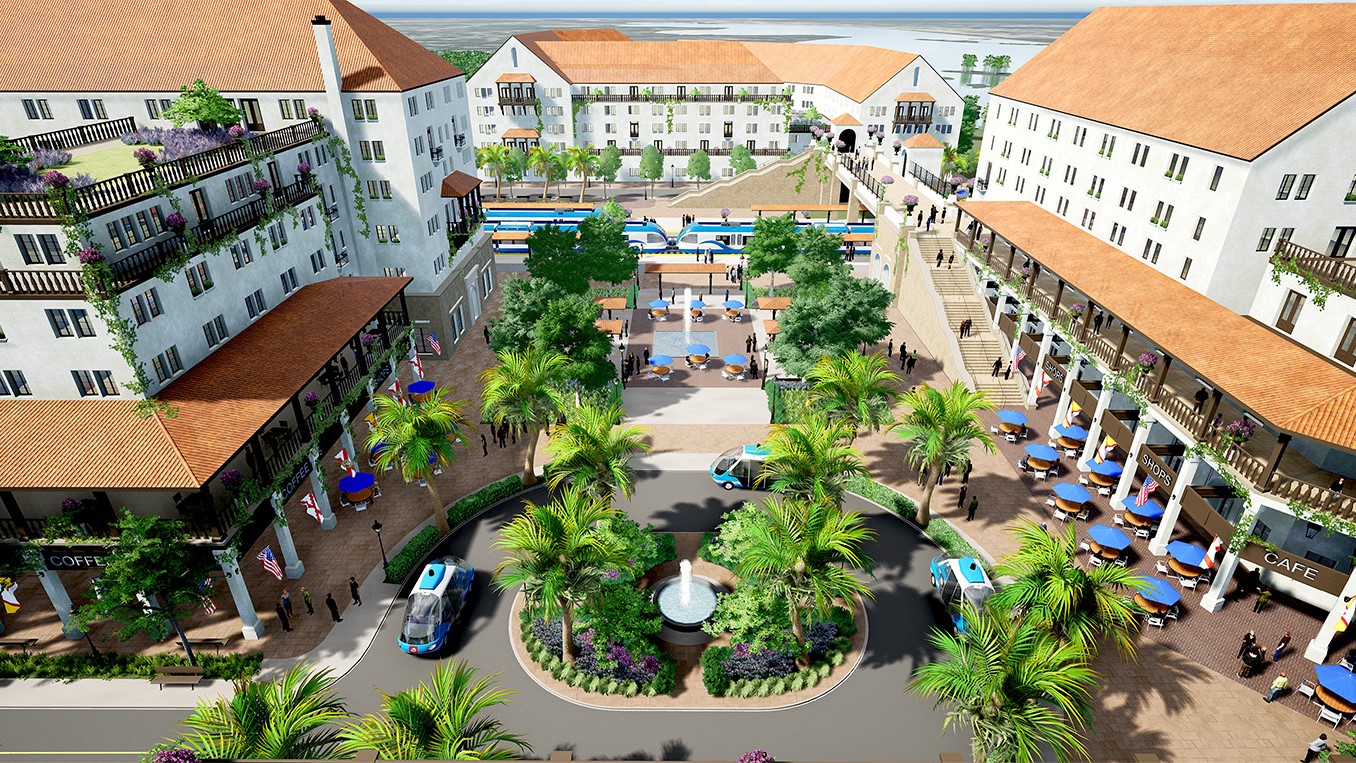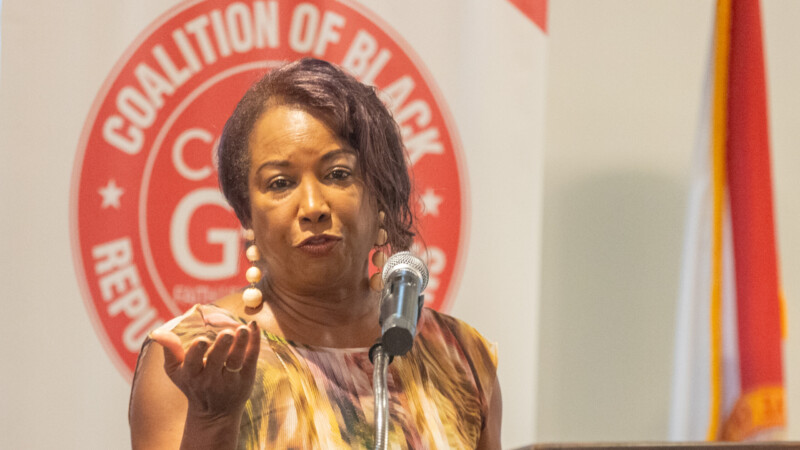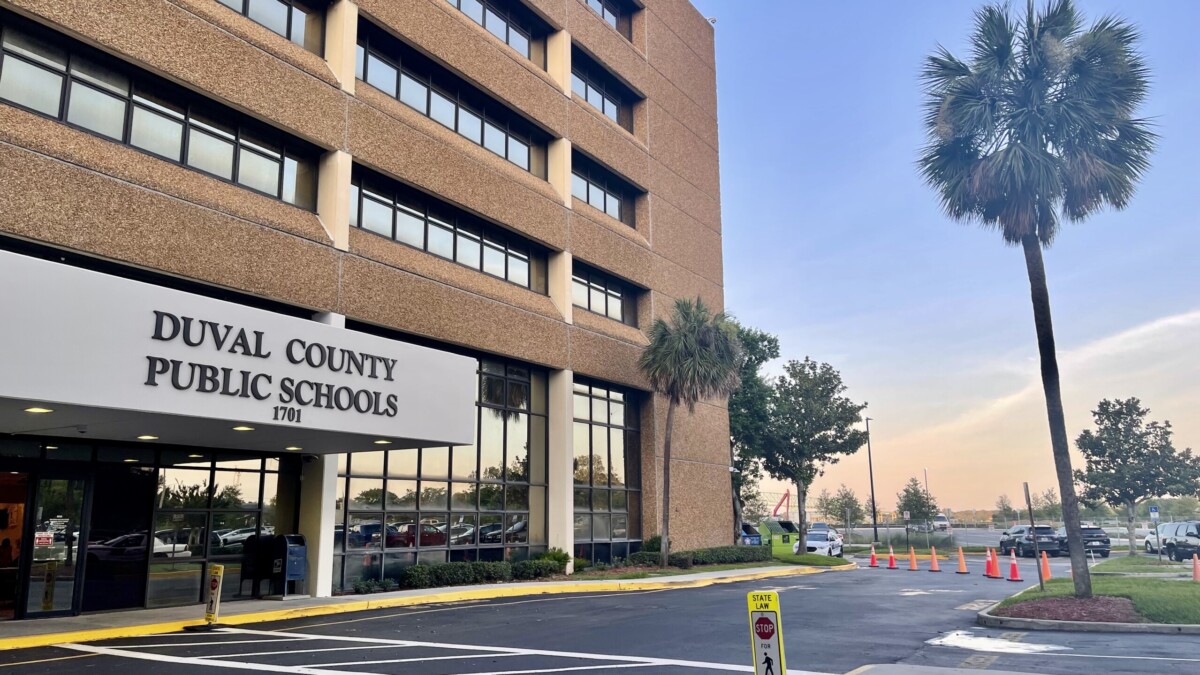A commuter rail line line linking Jacksonville and St. Augustine could be years away, but the next steps in the planning will come this week.
The Jacksonville Transportation Authority envisions a 38.4-mile First Coast Commuter Rail line that can carry commuters and also people seeking tourism, concerts, shopping or dinner.
Workshops this week will help JTA shape what seven potential train stations and their surroundings could look like.
- The first workshop will be 5 to 7 p.m. on Tuesday at the JTA’s Regional Transportation Center at 100 LaVilla Station, opposite the Prime Osborn Convention Center.
- The other will be from 4:30 to 6:30 p.m. Wednesday at St. Augustine City Hall on King Street.
Both workshops will start with presentations about the potential station sites in each community — four in St. Johns County and three in Jacksonville. The presentations will focus on what is there now and potential transit-oriented development to increase the viability of those communities, said Katrina Powell, JTA economic development director.
“Typically within a transit oriented development, you include all that. You have your mix of commercial, residential, office and entertainment that is centered around or near a transit station,” Powell said. “It is dense; it is walkable. With it being a mixed-use development, you are creating a ridership for commuter rail by the people who live around it. And it is also promoting growth for your commercial and your entertainment around the station. It attracts people, and it adds to a vibrant, connected community.”
Why a commuter rail line?
Drivers who go from Downtown Jacksonville to historic St. Augustine join a long line of everyday traffic taking that 45-minute to hourlong drive along Interstate 95 or U.S. 1, traffic studies show. JTA’s alternative is a 48-minute ride on the First Coast Commuter Rail that would avoid traffic, which is sure to grow with expected residential, commercial and retail growth.
Proposals to link St. Augustine and Jacksonville with a rail line have been discussed for years, including a 2009 study showing three possible routes, all starting in Downtown Jacksonville. One would have gone north on CSX rails to Yulee, one south on CSX tracks to Green Cove Springs and the third southeast on Florida East Coast Railroad tracks to St. Augustine. The estimate then was about $622 million.
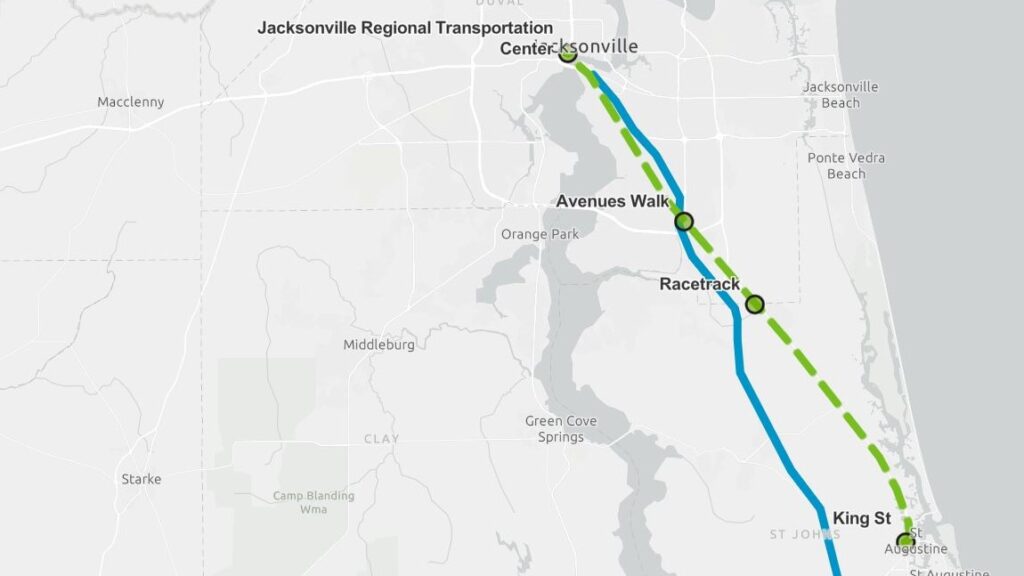
In 2010, JTA did another analysis into a commuter rail, then picked the Jacksonville-to-St. Augustine route as preferred in 2013. Six years later, a JTA study showed a need for the commuter rail system, followed by a preliminary environmental study.
A commuter train development study was funded through a $1 million Federal Transit Administration grant. Then $3.9 million was earmarked from Jacksonville’s local option gas tax for a preliminary engineering and federal environmental study.
What’s next
The first phase is to identify any issues the rail line could face, as well as opportunities. The study has to determine goals and objectives for each possible train station and the area around it. Each of 15 potential station sites was evaluated for possible use, zoning and ownership, and how well it connected to other transit systems. That was then boiled down to seven sites that have the characteristics needed for successful transit-oriented development.
Then came required public workshops.
Powell said the authority already held virtual community workshops in February, one for each county. Now comes this week’s workshops, following up on what was discussed five months ago, to determine goals and objectives for each station area.
When built, the rail line would run from 5 a.m. to just before 10 p.m. daily along Florida East Coast’s freight line right of way, just west of U.S. 1. The rail line would have its Jacksonville nexus next to the Prime Osborn Convention Center, which was once a railroad station, with JTA’s Regional Transportation Center already home to its bus lines as well as Skyway and various private bus services.
Jacksonville then would have two other proposed stations. One possibility is the JTA Park n’ Ride Transit Hub on Avenues Walk Boulevard off Philips Highway, since it is already a JTA city bus stop. Another is proposed near U.S. 1 and Baymeadows Road.
Those stops and what could be part of them is the focus of Tuesday’s workshop in Jacksonville, Powell said.
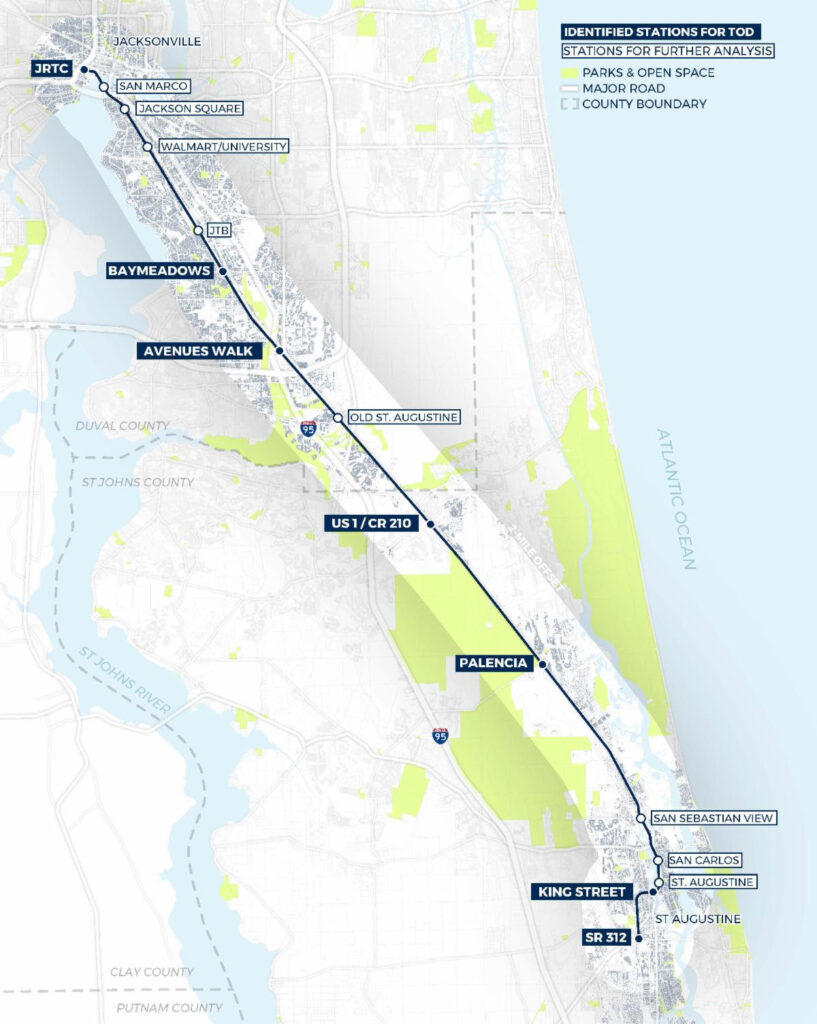
The workshop Wednesday in St. Augustine will include discussion about what is called the King Street Station in the West King neighborhood, just west of the San Sebastian River near U.S. 1/Ponce de Leon Boulevard. JTA sees this area as a western gateway into the downtown core that has experienced some growth in recent years because of its historic, urban neighborhood qualities.
That rail station would put commuters and tourists just blocks from downtown St. Augustine near hotels, restaurants and planned development. Other St. Johns County commuter rail stops with parking lots are possible along U.S. 1, including a site near County Road 210 in Saint Johns, as well as another near the Palencia community further south in the county.
“Particularly in St. Johns County, you have got these four stations that are great, buildable spaces that will advance because of what commuter rail will bring to that community, particularly the west side,” Powell said, referring to the potential site on the west side of the U.S. 1 and Kings Street intersection.
“We want the community to come out and really talk to us about what they would really like to see around the stations in St. Johns,” she said. “We will be providing examples of different types of developments that occur around (transit oriented developments) TODs — the residential, commercial and business piece, all of that mixed-use development.”
That said, building the line is still a long way off.
There’s a feasibility study, plus a preliminary engineering and environmental review, and a lot of components that don’t involve the public like connectivity analysis, forecasting and data assessments, Powell said.
“We are really looking to get information right now, finish up all this behind-the-scenes stuff, then submit that to close out this particular grant,” Powell said. “After that, we will need to go for funding for other things.”
So there is no timeline yet for construction, or even cost estimate yet, Powell said.



